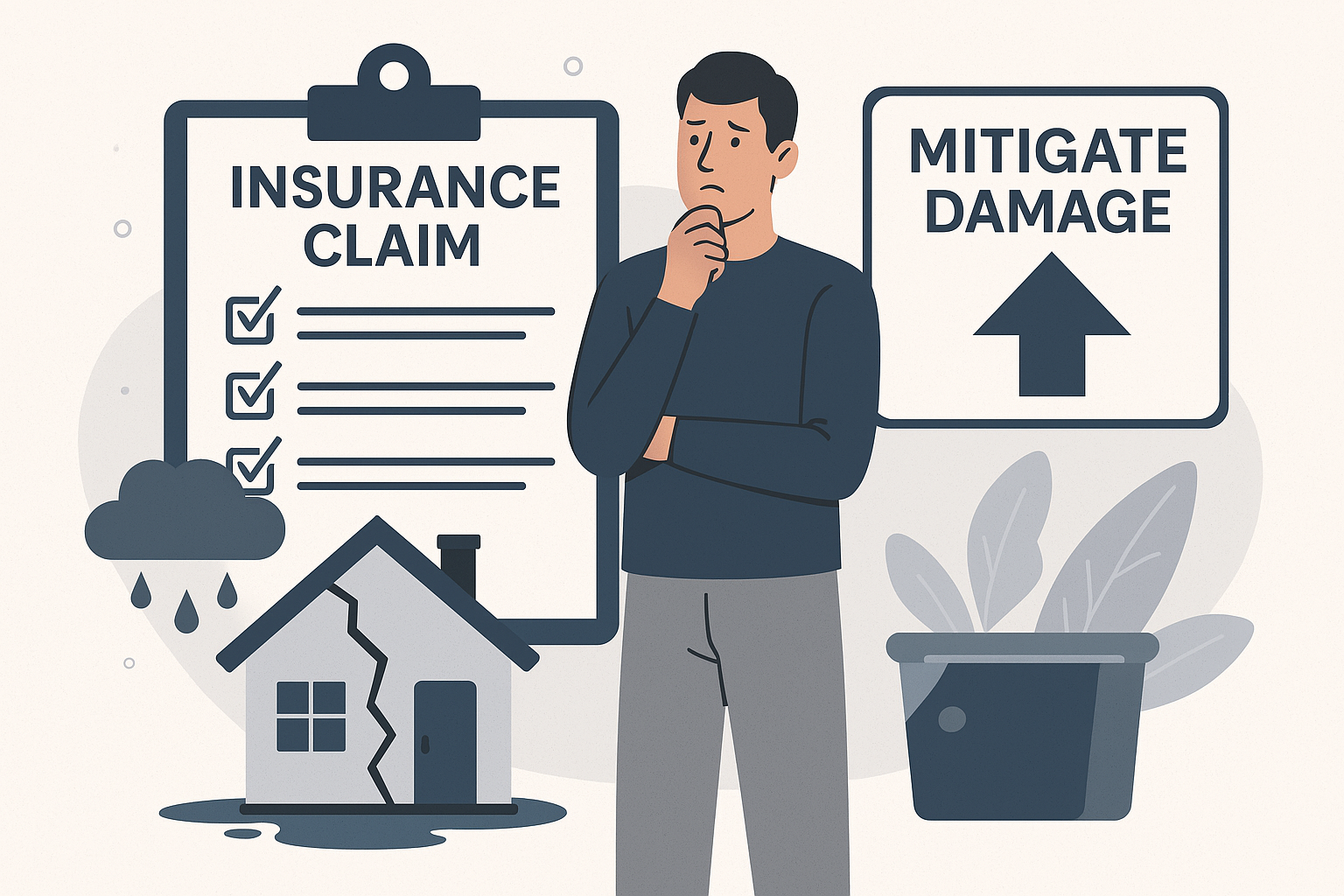When disaster strikes—whether it’s water damage, fire, or storm-related loss—policyholders do what they’re supposed to do: file an insurance claim. But all too often, after collecting years of premiums, the insurance company drags its feet. They delay payment, ask for more paperwork, or send out another adjuster or switch adjusters and ask for all the same information again. And then, once more damage accumulates because they haven’t paid, they shift the blame—accusing you, the policyholder, of failing to mitigate your damages.
What Is “Mitigation of Damages”?
In insurance terms, “mitigation” means taking reasonable steps to prevent further damage after a loss. For example:
- If you have a roof leak, you’re expected to place a tarp to prevent additional water intrusion.
- If you have a water pipe burst, you’re expected to stop the flow and remove standing water quickly.
- If your property is exposed to the elements, you should board up windows or cover open areas.
It’s a real duty—but it’s not an excuse for the insurance company to avoid its own obligations.
The Delay-and-Blame Tactic
Here’s how the tactic works:
- You report a loss.
- The insurance company delays. They ask for more estimates, more photos, another inspection.
- You wait for direction or approval. Maybe you’re told not to touch anything until an adjuster comes.
- Weeks go by—and more damage occurs.
- Then, they deny part of the claim saying you failed to mitigate your damages.
This is not just unfair—it’s strategic. The insurance company delays payment, then penalizes you for the consequences of their delay. We see it all the time. The insurance company claims that you should have tried to fix the damages yourself, but you can’t because the insurance company will not pay for the damages in the first place.
How to Protect Yourself
- Document everything. Take detailed photos and videos of the damage as soon as possible—and continue updating as conditions change.
- Get estimates and invoices. If you hire a contractor for emergency mitigation (like water removal or board-ups), keep every invoice.
- Follow your policy. Most insurance policies do allow for reasonable emergency repairs before adjuster review. You are not required to let your home deteriorate while you wait.
- Confirm all Communication in Writing. Most insurance companies have a portal for communication, but it is amazing how much material is missing when a lawsuit is filed. Make sure that all communication is via email and keep all emails in a safe location.
- Contact a lawyer early. If the insurance company is stalling, it’s time to get an advocate involved before they try to use their delay against you.
We Know the Game—and We Don’t Let Them Win
At The Insurance Law Firm, we’ve seen this strategy play out time and time again. That’s why we push back hard when insurers try to twist policyholder responsibilities into excuses to deny coverage. You paid your premiums. You reported your claim. You acted in good faith.
We’re here to make sure the insurance company does too.




